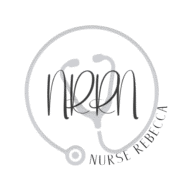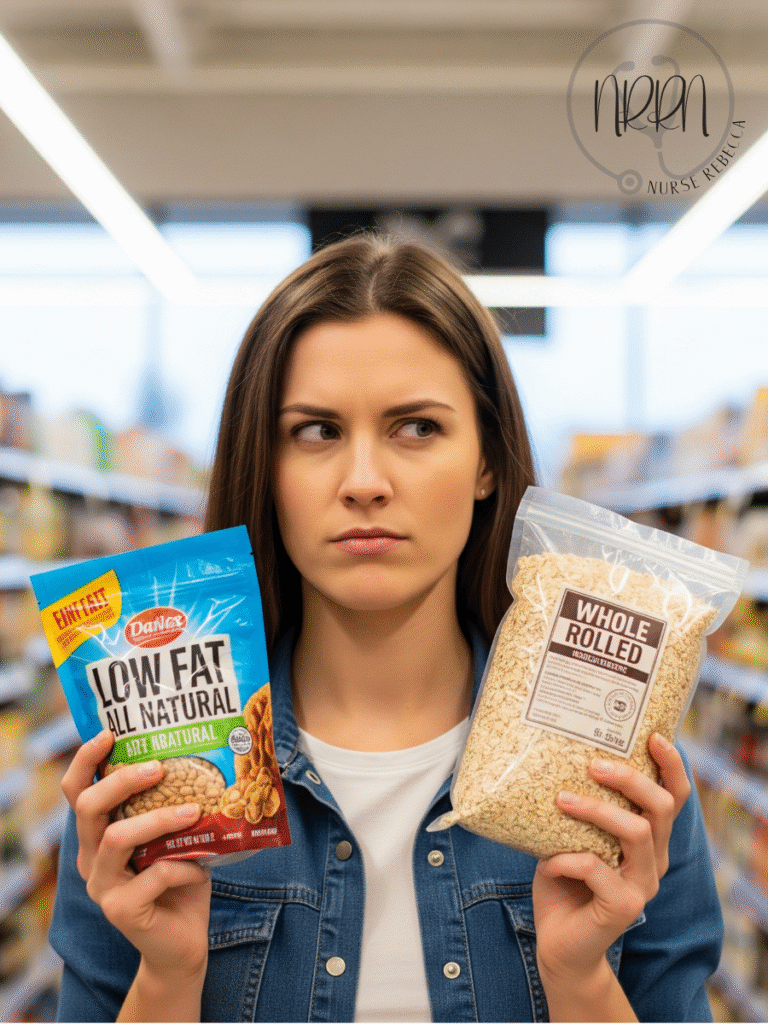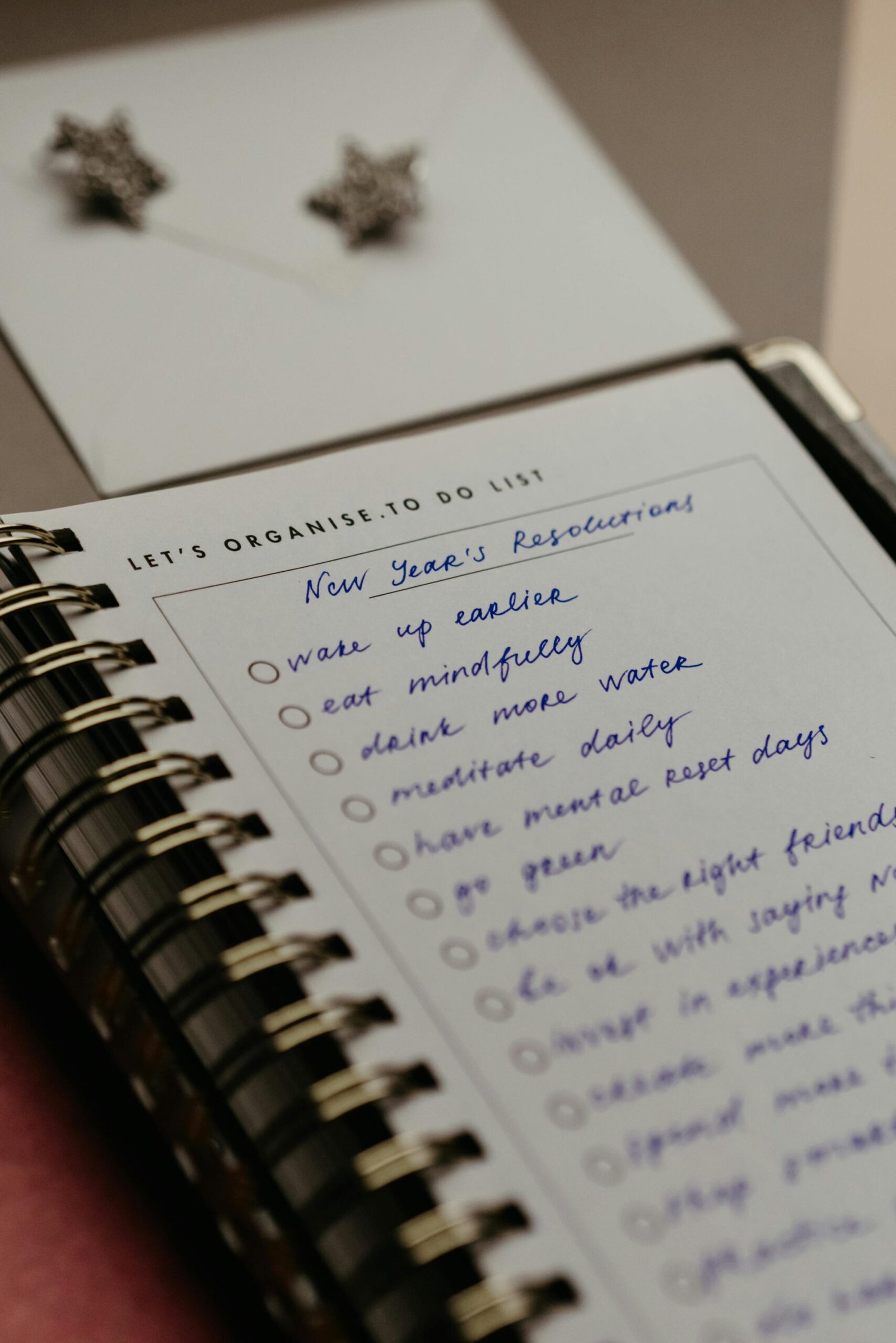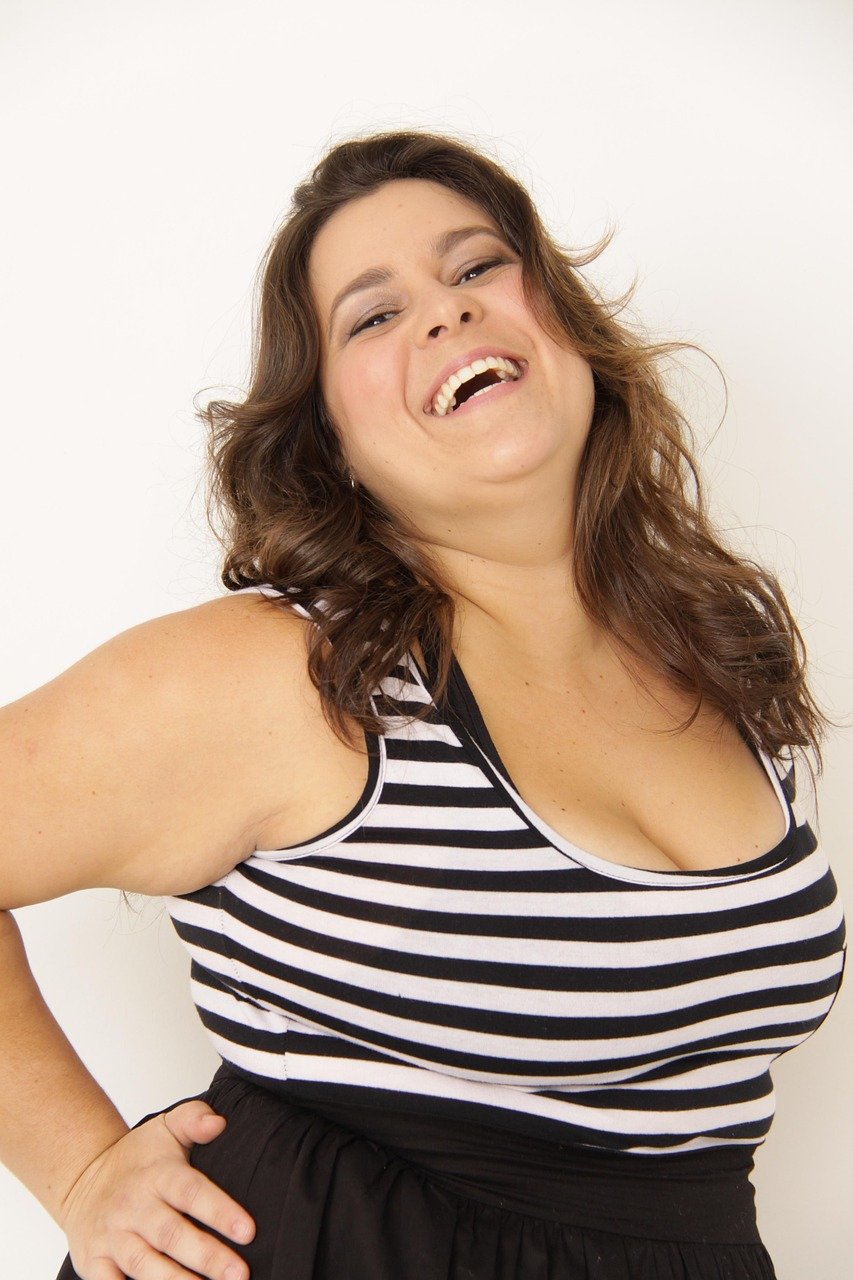I remember standing in the snack aisle one day, clutching a box of “healthy” granola bars and wondering if I was being duped. The front label proudly screamed “made with whole grains,” but a quick flip to the back revealed a sugar bomb wrapped in a clever disguise. That was one of the first times I realized just how sneaky food labels can be.
As a registered nurse and someone who’s spent years untangling my own complicated relationship with food, I’ve learned that the front of the package often tells a very different story than the back. Especially for women trying to eat better, lose weight, or just feel good in their bodies again, these misleading claims can seriously mess with our progress—and our trust.
Let’s break down 7 of the most misleading nutrition label claims I see all the time and talk about how to outsmart them.
1. “All Natural”
Ugh. This one gets me fired up.
“All natural” sounds comforting—like you’re picking apples off a tree or sipping water from a mountain stream. But here’s the truth: the FDA doesn’t have a strict definition for what “natural” even means. Companies can slap it on products that are highly processed, loaded with added sugars, and full of “natural flavors” (which can be chemically processed, by the way).
Case in point: I once bought a “natural” fruit drink for my kids that had more added sugar than a can of soda. Facepalm.
What to look for instead: Check the ingredient list. If it looks like a chemistry experiment or contains a paragraph of stuff you wouldn’t cook with at home, it’s probably not as natural as it claims.
2. “No Sugar Added”
This one is especially tricky for anyone trying to manage insulin resistance or reduce their sweet cravings. “No sugar added” doesn’t mean no sugar. It just means the manufacturer didn’t add table sugar during processing.
So what’s in it instead? Often fruit concentrates, juices, or sugar alcohols—all of which still affect your body and blood sugar in different ways.
I once recommended a “no sugar added” yogurt to a client who was trying to lower her A1C. Turns out it was sweetened with fruit puree and had more sugar than the original version.
What to look for instead: Check the nutrition facts panel. Look at the “Total Sugars” and “Added Sugars” lines. And if you’re experimenting with glucose tracking, jot down how certain “no sugar added” items affect your body. You might be surprised.
3. “Made With Whole Grains”
Here’s the deal: this label doesn’t mean the product is mostly whole grain. In fact, a product can be made with a sprinkle of whole wheat flour and still carry this claim, while the rest of it is made with bleached, refined flour.
It’s like saying a chocolate chip cookie is “made with oats” because there’s one oat in it. Technically true. Still a cookie.
What to look for instead: Flip the package and check the ingredients list. Whole grains (like whole wheat, brown rice, oats, or quinoa) should be the first ingredient listed. If you see “enriched wheat flour” or “refined flour” first, keep walking.
4. “Fat-Free” or “Low-Fat”
Remember the low-fat craze of the ‘90s? Yeah, I was there. And I remember thinking SnackWells cookies were basically a health food.
Here’s the kicker: when fat is removed from food, something has to be added to make it taste good—and that something is usually sugar or artificial additives.
Plus, we now know that healthy fats are essential for hormone balance, brain function, and satiety (feeling full). So fat-free doesn’t mean better. In many cases, it means worse.
What to look for instead: Don’t fear fat. Instead, focus on the type. Look for sources of healthy fats like nuts, seeds, avocados, olive oil, and yes—even full-fat dairy if your body tolerates it well.
5. “Gluten-Free”
Let me be clear: if you have celiac disease or a gluten intolerance, this label can be incredibly helpful. But for the rest of us, gluten-free does not mean healthier.
Some gluten-free products are more processed than their gluten-containing counterparts, filled with rice flour, tapioca starch, and gums to mimic texture. They can spike blood sugar just as fast (or faster) than the regular stuff.
I had a client who was eating gluten-free muffins daily thinking they were healthier. Her glucose readings were through the roof.
What to look for instead: Don’t choose gluten-free unless you need to. And if you do, opt for less-processed versions—like naturally gluten-free foods: quinoa, sweet potatoes, fruits, veggies, beans.
6. “Zero Calories” or “Zero Sugar” Drinks
Oh man, I used to be a Diet Coke girl. I genuinely thought I was making a smart choice.
But here’s what we now know: artificial sweeteners like aspartame, sucralose, and acesulfame potassium can confuse your brain, alter your gut microbiome, and sometimes even increase cravings for sweet stuff.
Some studies suggest that artificial sweeteners might still affect insulin response, even without calories. The science is still unfolding, but it’s enough to make me think twice.
What to look for instead: Water with fruit, herbal teas, or sparkling water without sweeteners are better options. If you want to kick the habit slowly, try replacing one soda per day with a cleaner option and see how you feel.
7. “High Protein”
Okay, this one’s tricky. Protein is essential, especially when you’re trying to build strength or feel full longer. But “high protein” on a label doesn’t guarantee it’s a good source—or that the rest of the product is worth it.
A protein bar with 20 grams of protein sounds great… until you see it also has 18 grams of sugar and a laundry list of ingredients you can’t pronounce.
And some “high protein” claims are based on tiny serving sizes or added cheap protein isolates that your body may not absorb well.
What to look for instead: Look at the full picture. How much sugar is in it? What’s the ingredient quality? And are you pairing your protein with fiber and healthy fat to keep blood sugar stable?
Final Thoughts: You’re Not Crazy—Labels Are Just That Confusing
If you’ve ever felt frustrated trying to “eat healthy” and still not seeing results, it’s not because you’re doing it wrong. It’s because the food industry spends billions on marketing to confuse you—and it works.
But now you know. And that’s a big deal.
Learning to read between the lines on food labels can help you make choices that support your energy, your hormones, your goals—and ultimately, your relationship with food.
And hey, if all this still feels overwhelming, you’re not alone. I’ve helped countless women navigate this very same maze, and I’d love to help you too.
💬 Want more support?
Let’s take the guesswork out of your health journey together. I offer free 60-minute consultations where we talk about your health history, your goals, and what’s been getting in your way—so we can clear a path forward that actually works.
🎯 Curious what’s really holding you back?
Take the free quiz:
👉 What’s Sabotaging Your Healthy Habits?
Discover the hidden mindset patterns that could be tripping you up—and how to shift them.
📘 Don’t miss these free guides:
💭 The Inner Critic’s Playbook: Spot the food beliefs that sabotage your success—and shut them down with science-backed mindset shifts.
🧪 What Spikes Me? Workbook: Track how your body reacts to everyday foods in a simple 7-day experiment that puts you in the driver’s seat.
You don’t need perfect willpower—you just need a plan that actually fits your life. And I’d be honored to help you build it.
— Nurse Rebecca, BSN-RN 🩺
Helping you cut through the noise and take back your health, one label lie at a time.











